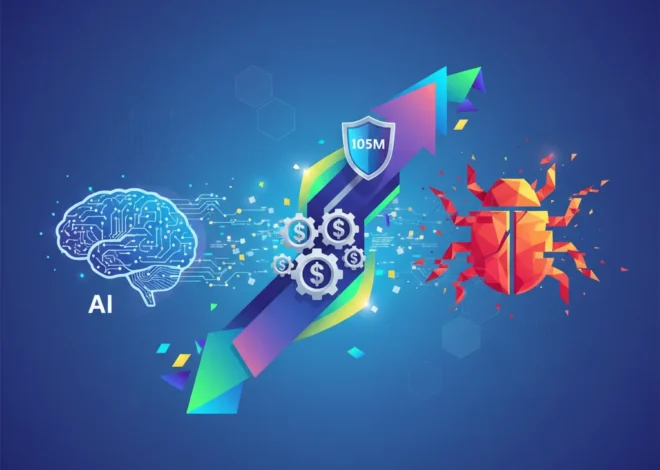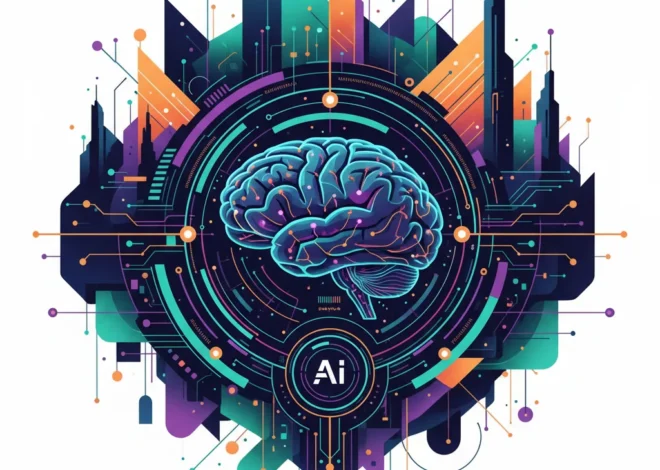Mars is a Software Problem We Haven’t Solved Yet
We’ve all seen the movies. We’ve heard the audacious proclamations from tech billionaires. The vision of humanity stepping onto the red soil of Mars, planting a flag, and building a new home among the stars is a powerful one. It’s a story of ambition, exploration, and destiny that taps into our deepest desire to push boundaries. But what if this grand vision is, as a recent Financial Times article puts it, just “bad science fiction”?
The reality is, the journey to Mars isn’t just a hardware problem of building bigger rockets. It’s not just a biological problem of surviving radiation and low gravity. At its core, making humanity a multi-planetary species is one of the most complex software, automation, and systems engineering challenges we have ever conceived. The romantic vision of Martian pioneers in silver suits quickly fades when you consider the code required to keep them alive.
Forget terraforming for a moment. Let’s talk about the tech stack. Let’s talk about the AI, the cloud infrastructure, and the cybersecurity protocols that would underpin a Martian colony. Because if we get the software wrong, the mission is over before the first habitat is even 3D-printed.
The User Stories from Hell: Deconstructing the Martian Dream
Before we can write a single line of code, we need to understand the system requirements. And for Mars, the requirements are brutal. The planet isn’t a “fixer-upper”; it’s an environment actively hostile to human life. The challenges, often glossed over in sci-fi, are non-negotiable constraints for any developer or engineer.
As UK astronomer royal Martin Rees bluntly stated, the idea of mass migration to Mars is a “dangerous delusion”, highlighting that the environment is far more hostile than the top of Everest or the South Pole. This isn’t just about discomfort; it’s about fundamental incompatibility.
Let’s quantify just how different this new “server environment” is from our own. Here’s a quick look at the specs for Planet Earth versus Planet Mars:
| Parameter | Earth (Our “Production” Environment) | Mars (The “Staging” Environment from Hell) |
|---|---|---|
| Average Surface Gravity | 1 g (9.8 m/s²) | 0.38 g (3.7 m/s²) |
| Atmospheric Composition | ~78% Nitrogen, 21% Oxygen, 1% Other | ~95% Carbon Dioxide, 3% Nitrogen, 1.6% Argon |
| Average Temperature | 14°C (57°F) | -63°C (-81°F) |
| Solar Radiation Exposure | ~0.3 mSv/day (at sea level, protected by magnetosphere) | ~0.67 mSv/day (on the surface, no global magnetosphere) |
| Communication Latency (Round Trip) | Milliseconds (to satellites) | 6 to 44 minutes |
Looking at this data, the challenge becomes clear. We aren’t just porting an application; we’re building an entire ecosystem from scratch in an environment where every variable is trying to kill the user. Your bones decalcify in low gravity, the air is unbreathable poison, and the constant radiation shreds DNA. This is the ultimate hostile user testing scenario.
The Billion Crypto Seizure: How AI and Cybersecurity Are Crushing Digital Crime Empires
Building the Martian Tech Stack: The OS for a New World
Given these constraints, human intervention in the day-to-day operations of a colony would be minimal, slow, and often impossible. The entire system, from life support to rovers, must be autonomous. This requires a completely new paradigm in software development, built on layers of sophisticated technology.
Artificial Intelligence as the Colony’s Central Nervous System
The 6-to-44-minute communication delay between Earth and Mars makes real-time remote control a non-starter. You can’t “joystick” a rover around a dangerous rock, and you certainly can’t wait for a mission controller on Earth to debug a critical life support failure. The colony needs a brain, and that brain must be a powerful, localized artificial intelligence.
This AI wouldn’t just be a fancy chatbot. It would be a distributed network of machine learning models responsible for:
- Predictive Maintenance: Analyzing sensor data from every piece of equipment—from water reclaimers to solar panels—to predict failures before they happen.
- Resource Management: Optimizing the allocation of scarce resources like power, water, and oxygen based on habitat needs, mission priorities, and production capacity.
- Scientific Autonomy: Directing rovers to perform geological surveys, identify promising sites for resource extraction, and conduct experiments without human oversight.
- Crisis Response: A meteoroid strike causing a hull breach? The AI must detect it, seal the area, reroute life support, and alert the crew in milliseconds.
This is the ultimate application of AIOps (AI for IT Operations), but instead of managing a data center, it’s managing life itself.
The Ultimate Edge Cloud and “Life-Support-as-a-Service”
You can’t rely on AWS or Azure when the nearest data center is 140 million miles away. A Martian colony would need its own robust, fault-tolerant, and self-healing cloud infrastructure. This “edge cloud” would be the most critical piece of hardware on the planet.
On top of this infrastructure, you’d run a suite of mission-critical SaaS (Software-as-a-Service) applications. Think “Life-Support-as-a-Service,” where habitat modules subscribe to oxygen and pressure management services, or “Farming-as-a-Service,” where AI-driven hydroponics systems manage crop growth. Every critical function would be a distributed, resilient software service, designed for 100% uptime, because downtime is fatal.
Cybersecurity’s Final Frontier
When your entire civilization runs on code, the most dangerous threat might not be a solar flare, but a malicious actor. The cybersecurity of a Martian colony is a matter of life and death. A virus that compromises the life support system, a ransomware attack that locks down the water reclaimer, or a hack that sends your mining rovers off a cliff—these are existential threats.
The colony’s network would need to be a zero-trust environment on steroids, with advanced threat detection, automated quarantine protocols, and redundant, air-gapped control systems. The programming for these systems would need to be formally verified to be free of bugs, a standard far beyond what is common in commercial software today.
The Red Planet’s Startup Ecosystem
While the scale of Mars colonization seems reserved for governments and billionaires, the reality is that the immense technological gaps represent a massive opportunity for startups and innovation. No single company can build everything. A successful mission would rely on a vibrant ecosystem of innovators solving niche problems.
Imagine the startups that would emerge:
- AI for Geology: Companies developing machine learning models to analyze Martian soil samples and identify the best locations for mining ice and minerals.
- Robotic Automation: Startups building highly dexterous robots for habitat construction, equipment repair, and even surgical assistance.
- Closed-Loop Systems: Innovators creating hyper-efficient systems for recycling every drop of water and every molecule of air—a technology with enormous market potential on a resource-constrained Earth.
- Next-Gen Energy: Developing lightweight, durable, and highly efficient solar panels and energy storage solutions designed for the harsh Martian environment.
The pursuit of Mars acts as a powerful catalyst, creating a gravity well for investment and talent focused on solving fundamental problems in sustainability and automation.
Beyond the Blackout: Vodafone’s Outage and the Hidden Fragility of Modern Software
The ROI of a “Dangerous Delusion”
This brings us back to the central critique: Is this all a colossal waste of resources? Should we be focusing this intellectual and financial capital on solving Earth’s problems instead? It’s a valid and essential question.
But the answer might be that this is a false dichotomy. The challenges of keeping humans alive on Mars are, in many ways, amplified versions of the challenges we face on Earth.
- How do we create a perfectly circular economy with zero waste? A Martian colony demands it.
- How do we produce food with minimal water and energy? Martian greenhouses will perfect it.
- How do we build fully autonomous systems to manage critical infrastructure? Mars is the ultimate testing ground.
The innovation required for Mars isn’t just for Mars. The advanced AI, the hyper-efficient energy systems, and the closed-loop life support technologies are precisely what we need to build a more sustainable and resilient civilization on our own planet. The 45% increase in private space investment in recent years shows that the market is already betting on the terrestrial applications of space technology.
Pushing the boundaries of programming and engineering for an off-world settlement forces us to create breakthroughs that have profound implications right here at home. It’s the ultimate moonshot, and like the original Apollo program, the side effects of the journey may prove to be more valuable than the destination itself.
ChatGPT Unchained: Why OpenAI's New Stance on Erotica is a Defining Moment for AI
So, is the dream of Mars a fool’s errand? From a purely practical, near-term perspective, the critics have a point. The obstacles are monumental. But from the perspective of a developer, an engineer, or an entrepreneur, Mars represents something else. It is the ultimate challenge—a problem so complex and unforgiving that it will force us to create the next generation of software, AI, and automation. And that is a mission worth accepting, whether we ever set foot on the red planet or not.


